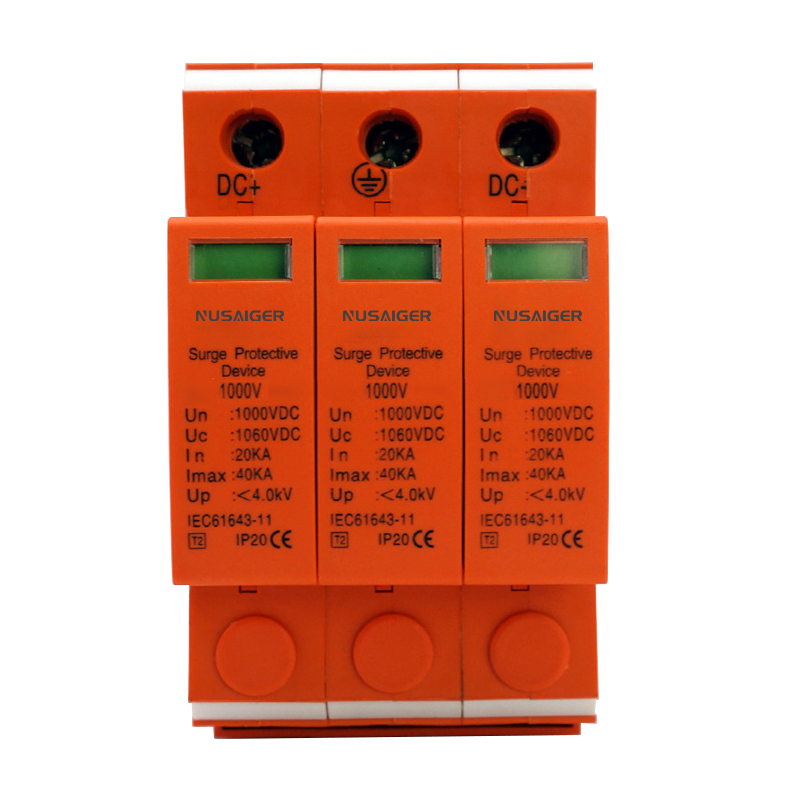Ultimate Guide to Surge Protective Devices: Protection, Installation, and Maintenance Strategies
1. Introduction
Electrical surges, whether from lightning strikes, grid fluctuations, or switching operations, can cause severe damage to sensitive equipment and infrastructure.
Surge Protective Devices (SPDs) are critical for preventing this damage.
This comprehensive guide covers everything from SPD types and selection to installation, maintenance, and real-world applications, ensuring maximum protection for your electrical systems.
2. How SPDs Protect Electrical Systems
SPDs act by redirecting excessive voltage or current away from protected devices.
The key technologies used in SPDs include:
- Metal Oxide Varistors (MOVs): Absorb high-energy surges and limit voltage peaks.
- Gas Discharge Tubes (GDTs): Safely conduct large currents to ground during extreme surges.
- Transient Voltage Suppression (TVS) Diodes: Offer fast response for low-energy surges affecting electronics.
By rapidly diverting excess energy, SPDs ensure that connected equipment continues to operate normally after transient events.
3. Types and Classifications of SPDs
SPDs are classified according to their installation point and the nature of surges they are designed to handle:
3.1 Type 1 SPDs
Installed at the main service entrance, Type 1 SPDs protect against direct lightning strikes and major utility faults.
These SPDs are capable of handling very high surge currents.
3.2 Type 2 SPDs
Positioned at distribution panels, Type 2 SPDs defend against indirect surges caused by lightning, switching, or grid disturbances.
Commonly used in residential, commercial, and industrial settings.
3.3 Type 3 SPDs
Located close to sensitive equipment such as computers, servers, and medical devices.
Type 3 SPDs offer fine protection and are typically used in combination with Type 1 or Type 2 SPDs.
3.4 Combined SPDs
Hybrid SPDs (e.g., Type 1+2 or Type 2+3) offer multiple layers of protection in a single device, ensuring comprehensive coverage.
4. Benefits of Surge Protection
- Device Protection: Safeguards computers, home appliances, servers, and industrial equipment.
- Fire Safety: Reduces the risk of fires caused by electrical surges.
- System Reliability: Minimizes downtime in both commercial and industrial applications.
- Cost Savings: Prevents costly replacements and repairs of damaged equipment.
- Regulatory Compliance: Helps meet international standards such as IEC 61643, UL 1449, and IEEE guidelines.
5. Common Sources of Surges
- Lightning strikes (direct or nearby).
- Utility grid switching and power restoration events.
- Motor and large appliance cycling.
- Faulty wiring or inadequate grounding.
- Electrostatic discharge affecting sensitive electronics.
6. Selecting the Right SPD
Key factors when selecting SPDs include:
- Nominal Discharge Current (In): Determines how many surges the SPD can withstand without failing.
- Maximum Discharge Current (Imax): The peak surge current the SPD can safely handle.
- Voltage Protection Level (Up): Maximum voltage allowed to reach protected equipment.
- Maximum Continuous Operating Voltage (MCOV): Ensures SPD can handle normal voltage conditions safely.
- Response Time: Faster response SPDs provide better protection for sensitive electronics.
- End-of-Life Indicators: Visual or remote notifications to indicate when the SPD needs replacement.
7. Installation Best Practices
- Install SPDs as close as possible to the main distribution panel to minimize wiring length.
- Ensure proper grounding and low-impedance connections.
- Use conductors of sufficient size to safely carry surge currents.
- Apply a layered protection strategy using multiple SPD types.
- Follow local electrical and safety codes rigorously.
8. Maintenance and Monitoring
- Check indicator LEDs or status windows regularly.
- Replace SPDs after major surge events.
- Keep records of SPD maintenance and replacement history.
- Use remote monitoring SPDs in industrial or critical applications for real-time alerts.
9. Layered Protection Strategy
For effective surge mitigation, deploy SPDs in a multi-layered configuration:
- Type 1 SPDs at the service entrance.
- Type 2 SPDs at distribution panels.
- Type 3 SPDs close to sensitive equipment.
This layered approach ensures maximum protection at each stage of electrical distribution.
10. Applications Across Sectors
- Residential: Protects appliances, entertainment systems, smart devices, and security equipment.
- Commercial: Ensures office electronics, servers, and network devices are protected.
- Industrial: Safeguards automation equipment, motors, sensors, and manufacturing machinery.
- Renewable Energy: PV systems, wind turbines, and energy storage solutions require SPDs for protection.
- Telecommunications: Protects base stations, fiber networks, and communication infrastructure.
11. Common Mistakes to Avoid
- Installing SPDs far from the distribution panel, reducing effectiveness.
- Poor grounding and bonding practices.
- Failure to coordinate multiple SPD types for layered protection.
- Using SPDs with insufficient surge ratings.
- Neglecting SPD replacement after significant surges.
12. Future Trends in SPD Technology
- Smart SPDs with remote monitoring and predictive alerts.
- Hybrid SPDs combining MOV, GDT, and TVS technologies for optimal protection.
- Compact, space-saving designs for modern electronic systems.
- AI-assisted predictive maintenance in industrial applications.
13. Conclusion
Surge Protective Devices are essential for ensuring electrical system safety and protecting valuable equipment.
Proper selection, installation, and maintenance, combined with a layered protection strategy, can prevent damage, reduce downtime, and save costs across residential, commercial, and industrial applications.
Investing in high-quality SPDs is a proactive step toward long-term electrical reliability and safety.



